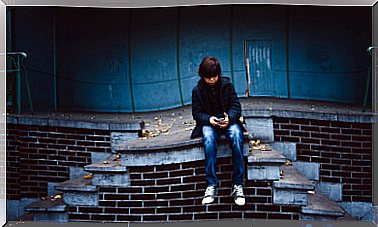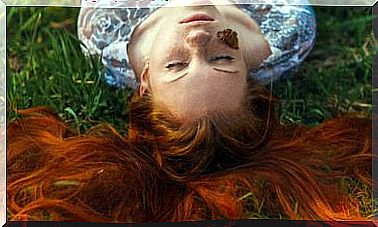Synesthesia: I Hear Colors And See Sounds

Synesthesia is a phenomenon consisting of experiencing a perceptual sensation that accompanies the perception of a visual, tactile or auditory stimulus. For example, one of the most common forms of synesthesia involves associating numbers, days of the week, or months with a particular color. The person perceives them by means of a color that is always the same for every number or every day.
Not many people experience this phenomenon, but it is more common than we think. In fact , there are many people who do not know that their way of perceiving certain stimuli is different from the rest, until they talk to someone and realize that it is not normal.
This phenomenon is not experienced as unpleasant. Even people who are synesthetic cannot imagine the world without seeing it their way. It would be boring for them. So we are not talking about a pathology, but a different, richer way of perceiving the world.
Different forms of synesthesia
There are many different forms of synesthesia. For example, there are people who see colors while listening to music, although it is not a hallucination. It’s not that they see colors and believe they are part of reality, but instead they are flooded by a stream of colors when they listen to a music; each color is associated with a particular musical note.

One scientist, Jamie Ward, says that synaesthetics experience the world in an extraordinary way and that they have an extra sense of the stimuli around them. Words can evoke tastes, numbers a certain color, pain can also be associated with a taste or a color, the touch of different surfaces, arousing a feeling… There are different ways to experience it.
Synesthesia and art
Perceiving environment in such a rich way can encourage creativity. This can be beneficial to those who are committed to art as they can show what the world looks like to them through their work.
A New York artist, Carol Steen, uses her condition to inspire her creations. This woman says she can sense the color, taste, and smell of pain. As a form of inspiration, she uses acupuncture to generate these sensations and translate them into her artworks.

There is evidence of famous synaesthetics, such as the writer Vladimir Nabokov, who claimed that for him the combination of the letters “NZSPYGV” formed the rainbow. The physicist and Nobel laureate Richard Feynman and the philosopher Ludwig Wittgenstein were also synaesthetics.
Is it hereditary?
Today we know that synesthesia has a biological and a genetic component, although the genes involved have not yet been accurately identified. Parents and children can inherit synesthesia, but the feelings don’t have to be the same. The condition is inherited, but not the way it is experienced.
In fact, between twins it has been found that their experiences are not the same and even that one of the siblings may be synesthetic while the other is not. It can also happen that parents do not experience it, even though they are carriers of the gene and their child does experience it.

Synesthetic children usually discover they have the condition during puberty: when they talk about a sound or a song, they realize that we don’t see it the way they do. For example, according to Ward, a child described sounds as colors and said that frogs’ croaks are usually brown, but on that day it sounded blue, because the sound was sharper that day.
Synesthesia in the brain
There is an area in our brain that is responsible for color perception: the V4. Julia Nunn, in an experiment conducted with 12 people, noticed that this part of the brain cortex was activated when the synesthetic subjects listened to a speech with their eyes closed, showing that the perception of one stimulus (sound) automatically causes the other perception (color) .
Moreover, the generation of one sensation by means of another sensation is experienced almost immediately and always in the same way. Some see it on the same paper they read the number or word on, although they are aware that they are not actually on the paper. Others say they see it as some sort of inner screen or they see it as if it were floating.
In summary, one can say that synesthesia is the following:
- Stable, perceiving the same sensations with each stimulus (always the same color for a given number).
- Known, can be inherited.
- Specifically, it always relates to the same stimuli.
- It happens quickly. After reading the word, listening to a song, touching a surface or seeing a number, the corresponding feeling automatically matches.
Other Forms of Synesthesia
This phenomenon occurs in people who perceive the environment in a special way from birth and is probably the result of hereditary genes. But it’s not the only way to experience it. You can also get a similar experience by taking LSD.
It can be experienced even after blindness. Blind people can mentally experience visual images through hearing. In this way, synesthesia is a phenomenon that still arouses the curiosity of many scientists and raises many questions about the way we perceive the world.








